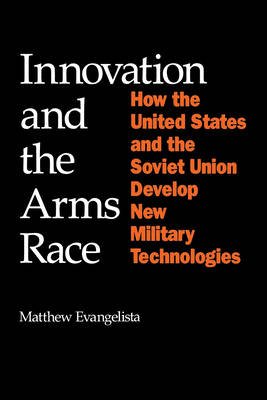
- Afhalen na 1 uur in een winkel met voorraad
- Gratis thuislevering in België vanaf € 30
- Ruim aanbod met 7 miljoen producten
- Afhalen na 1 uur in een winkel met voorraad
- Gratis thuislevering in België vanaf € 30
- Ruim aanbod met 7 miljoen producten
Innovation and the Arms Race
How the United States and the Soviet Union Develop New Military Technologies
Matthew EvangelistaOmschrijving
Innovation and the Arms Race investigates the causes and mechanisms of the "technological arms race" between the United States and the Soviet Union. Challenging the commonly held notion that Soviet weapons innovation processes simply mirror those of the United States, Matthew Evangelista shows that the United States usually leads in introducing new military technology, while the Soviets typically react to American initiatives.
Evangelista bases his study of pivotal nuclear weapons development decisions on a variety of US and USSR primary sources, including the memoirs of weapons designers and scientists, declassified intelligence analyses, Soviet Academy of Science documents, and Nikita Khruschev's taped reminiscences. He finds that in the United States, impetus for innovation comes "from the bottom" at the initiative of corporate or government researchers and military officials, whereas the centralized Soviet system produces innovations "from the top" in response to foreign developments. A revelatory analysis of US military policy, Soviet-American relations, and weaponry development, Innovation and the Arms Race bears lessons for the study of great power competition and military innovation today.
Specificaties
Betrokkenen
- Auteur(s):
- Uitgeverij:
Inhoud
- Aantal bladzijden:
- 320
- Taal:
- Engels
- Reeks:
Eigenschappen
- Productcode (EAN):
- 9780801496080
- Verschijningsdatum:
- 15/07/1989
- Uitvoering:
- Paperback
- Formaat:
- Trade paperback (VS)
- Afmetingen:
- 156 mm x 234 mm
- Gewicht:
- 489 g

Alleen bij Standaard Boekhandel
Beoordelingen
We publiceren alleen reviews die voldoen aan de voorwaarden voor reviews. Bekijk onze voorwaarden voor reviews.











